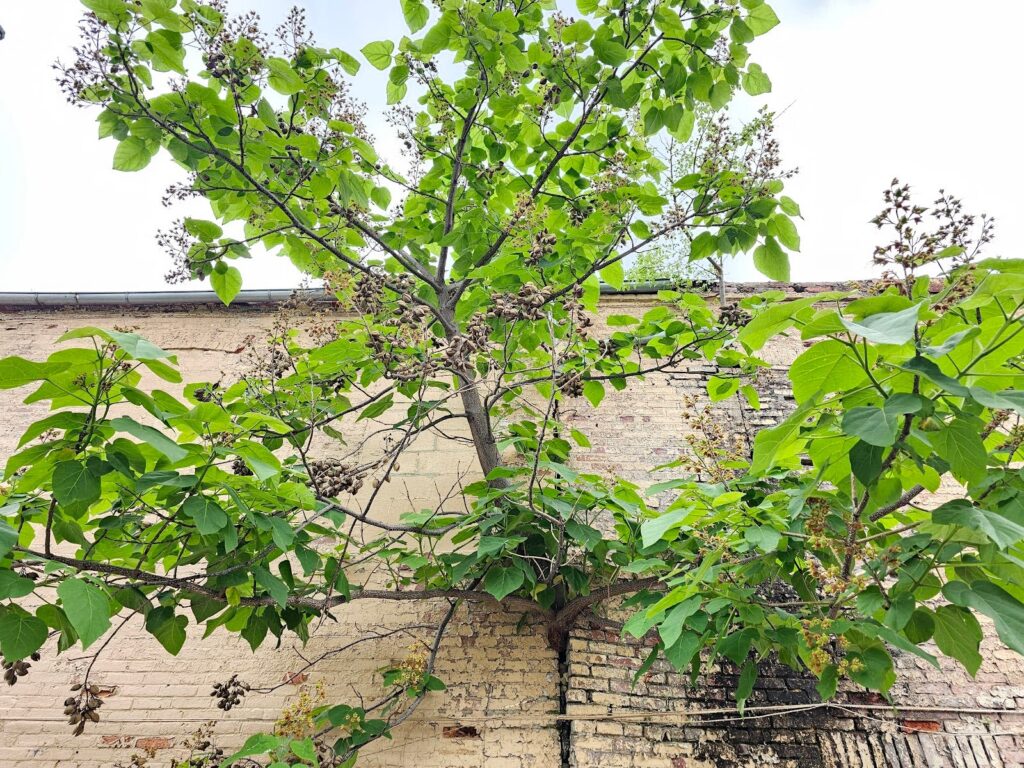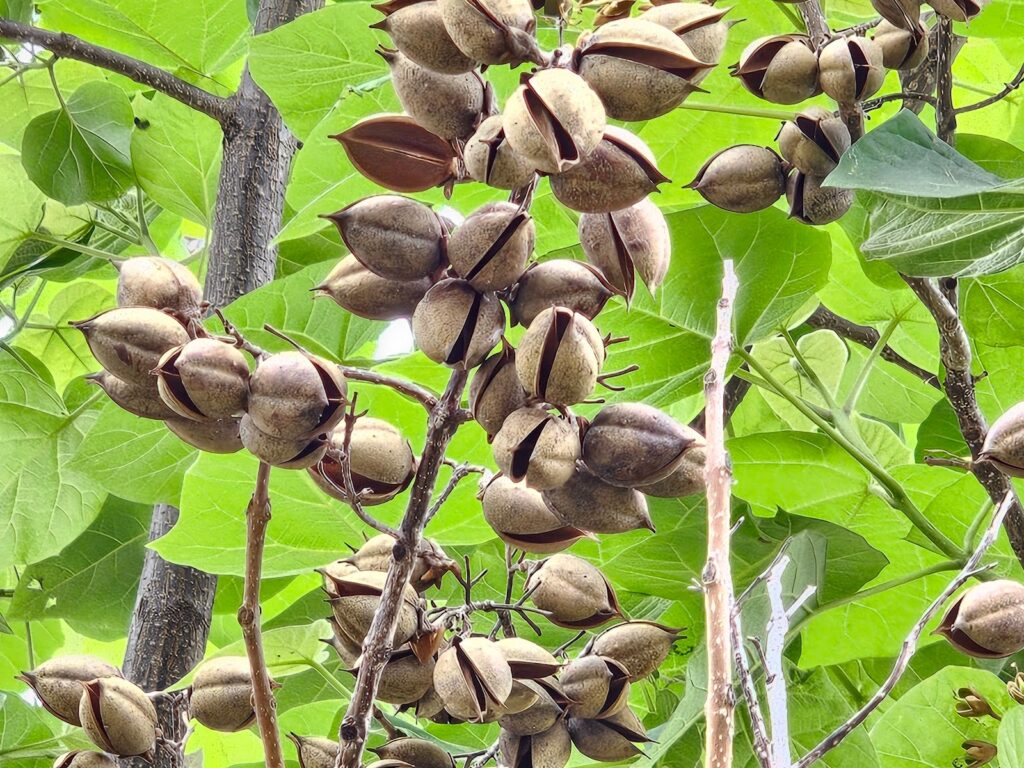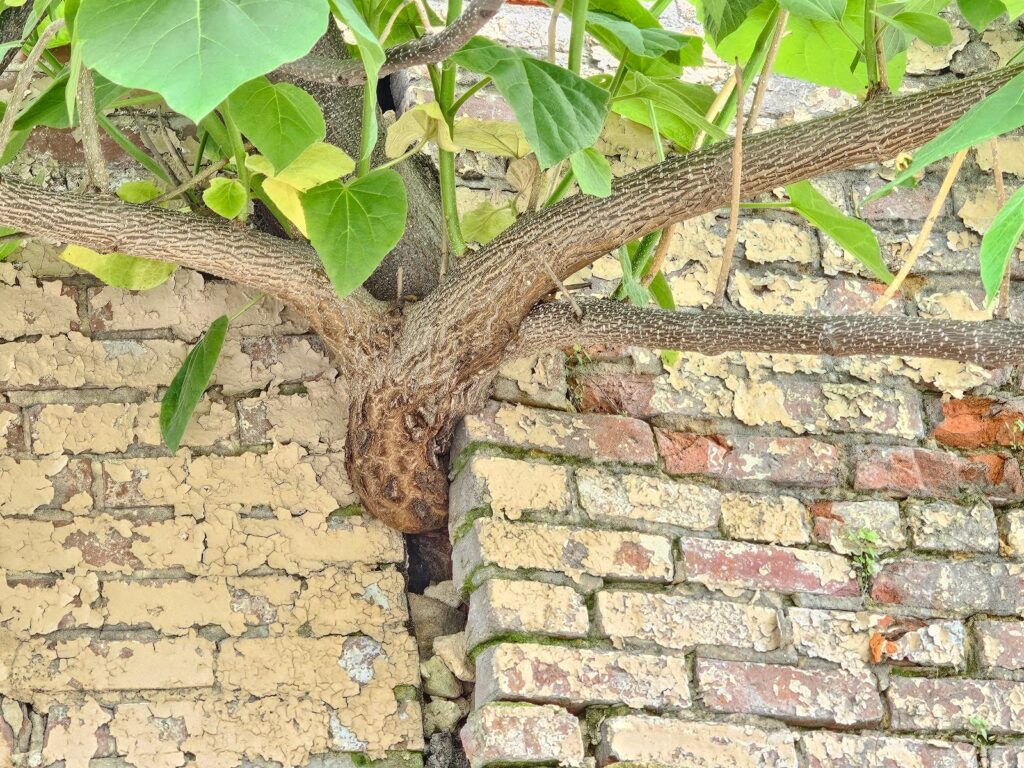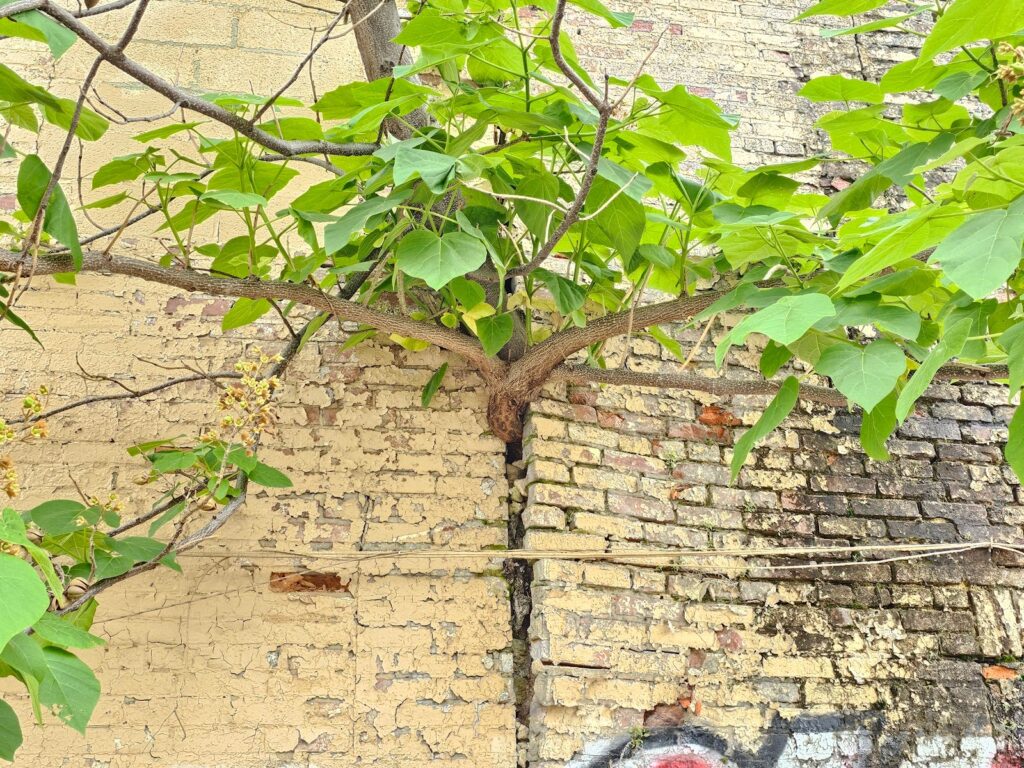Paulownia Trees Breaking Brick: Understanding the Damage and Solutions
The Paulownia tomentosa tree is maybe more commonly known as an empress tree or a princess tree. This particular type of tree is extremely common here in Washington, DC. It often grows in alleys where yards are unmaintained or in places where seeds can get into, but it is a very difficult plant to manage. It’s often grown as a weed, an unintentional plant that grows between the cracks and causes major damage to buildings. Some people like this tree species. Some people even say that it’s a symbol of the Phoenix.
In Asia, the wood of this tree is often used for making lightweight crafts because like balsam, this is a very lightweight type of wood. Here in DC though, many people recognize it as a destructive force.

Our company focuses on historic restoration, so when we see buildings and particularly masonry parts of buildings being destroyed by the effects of trees and or plants and biocolonization that grows into and through masonry, we are concerned. Here, the next picture below, you can see an example of an empress tree that has grown into a brick building. It didn’t grow directly into a typical regular historic mortar joint, instead, it grew through a joint where two buildings met.
This type of tree and most types of trees for that matter have the ability to grow into typical mortar joints, where those joints need to be repointed or have been neglected and have not been repointed for many years. However, an even easier location to grow, in this case, is the cold joint between these buildings.
When a building is constructed in its original form and later a subsequent building is added on next to it, as an additional or neighboring, adjoining building, the junction between the original structure and the addition is often referred to as a cold joint, if the old building is left as it was and the new building is just built next to it without being merged or toothed-in together. Rather than forming a cold joint, an alternative method involves removing alternating bricks along the vertical edge of the existing building where it will meet the new construction.
The new building is then integrated by inserting its bricks, again in an alternating pattern from bottom to top, into the spaces left in the original structure. This interlocking construction technique is known as tooth-in masonry. This type of joining between two separate parts of a building, old and new, or two different buildings is complicated because it requires a lot more work to remove alternating bricks in the old building and then also more work to install new bricks in a zig zag or toothed-in type manner.
In the next picture below, where mostly looking at the existing building, on the right hand side of the joint because the older portion of building is for the back to the left. However, in this case, the trees covering most of the visible portions of that wall but around the edges of the leaves, you can see parts of that brick. The mortar joints at this portion of the wall are more pronounced because it is not just older but in further stages of decaying deterioration and as the joints have aged and recessed, they are more desperately in need of repointing, as time goes on.

It’s interesting to think about how long these buildings will last once humans cease to exist. They won’t last long (unless AI robots find the buildings useful and decide to maintain them). Nature will literally break these buildings apart into smaller pieces and the brick buildings will collapse. They historic brick buildings will last much longer than the modern tract homes and stick and cardboard homes of today though.
Even these strong and intrinsically stable brick structures from the historic urban buildings here in Washington DC will eventually break down. Within decades to centuries, the walls themselves will destabilize from plant growth and mortar deterioration just like this example. Then in centuries more, the brick will be reduced to rubble. Eventually in the millennium of years past that, even the bricks themselves will be mostly reduced to rubble and dust.

If you look, both in the picture above and in the picture below, you can see that there are several seed pods on this tree. One of the annoyances of this particular species is that it drops tons of seed pods all over the ground but also, even worse, emits a weird gluey type sap that drips out onto everything below.

Like a door being opened, as you can see in the picture below, the tree is pushing these walls out of the planer form and splitting the buildings apart.

As the wall bends apart, bit by bit, eventually the bricks on both sides of the tree will start to destabilize until the wall collapses. This particular tree species grows so quickly with relatively weak grained wood, that it can grow to the point that it will destabilize and become uprooted even under its own weight. Although it grows fast and the wood is relatively lightweight, it’s not light enough because the tree isn’t able to even support its own weight in certain types of growth paths which lead to its collapse and damage to adjacent structures.

Our company, Dupont Tuckpointing and Masonry, specializes in masonry restoration, historic brick repointing, and tuckpointing services in the Washington D.C. area. These buildings are uniquely historic, and their preservation requires skilled masons who are technically trained in the best practices and knowledge of proper restoration techniques.
We understand the significance of maintaining the architectural integrity of these historic structures, and our team of experienced professionals is dedicated to delivering exceptional craftsmanship. Whether you require masonry restoration, tuckpointing, or brick repointing services, we are here to help.
At Dupont Tuckpointing and Masonry, we take pride in our work and strive to ensure that every project is executed with the utmost care and attention to detail. We are committed to preserving the rich heritage of Washington D.C.’s built environment for generations to come.
If you have any questions or needs regarding masonry restoration, historic brick repointing, or tuckpointing services, please do not hesitate to reach out to us. We would be delighted to assist you and provide you with the expertise and quality workmanship that your historic property deserves.
You can reach us by telephone at (202) 796-7644 and you can reach us by email from the contact form on our website at https://duponttuckpointingmasonrydc.com/contact-us/




